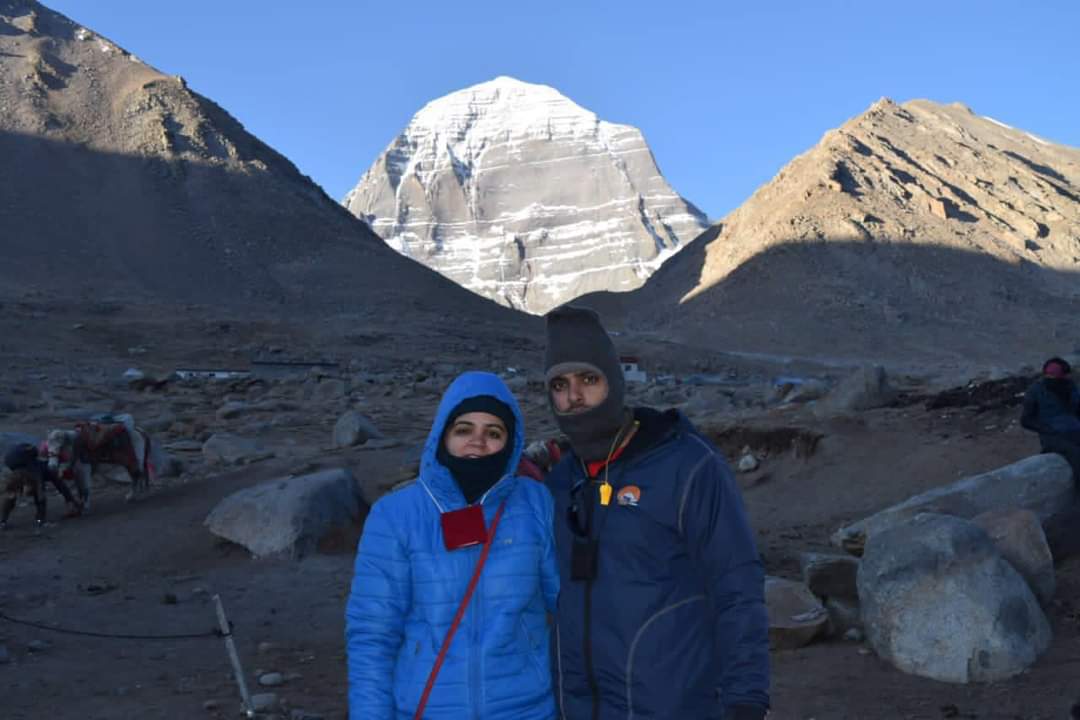The Adi Kailash Yatra and the Kailash Mansarovar Yatra both revolve around the sacred Mount Kailash, yet they diverge significantly in terms of geography, accessibility, and the religious essence of the pilgrimages. These journeys offer profound spiritual experiences, providing pilgrims with opportunities for self-reflection, devotion, and a deep connection with the divine. Choosing between the Adi Kailash Yatra and the Kailash Mansarovar Yatra depends on individual preferences, the quest for solitude or a more popular pilgrimage, and the willingness to navigate challenges such as high-altitude trekking and cross-border travel.
Mythological Significance:
Adi Kailash:
Pilgrims embark on a spiritual journey to the Adi Kailash region in Uttarakhand, India, believed to be Lord Shiva’s abode since time immemorial. The Adi Kailash Yatra involves circumambulating the Adi Kailash peak, akin to a parikrama, representing Mount Kailash. The trek encompasses challenging terrains in the Indian Himalayas, providing a uniquely adventurous and spiritually enriching experience. The off-the-beaten-path nature of the Adi Kailash Yatra offers a more private and intimate pilgrimage compared to the Kailash Mansarovar Yatra.
Kailash Mansarovar:
The Kailash Mansarovar Yatra takes pilgrims to the sacred Mount Kailash in Tibet, China, considered the center of the universe in Hinduism, Buddhism, Jainism, and Bon. The yatra includes the revered parikrama of Mount Kailash and a visit to Mansarovar Lake, believed to purify sins. The journey demands meticulous attention to logistics, as pilgrims need permits and authorization from Chinese authorities. The high-altitude trek, including the challenging Dolma La Pass, adds to the physical exertion required.
Accessibility:
Adi Kailash Yatra:
Situated in Uttarakhand, India, the Adi Kailash Yatra is considered more approachable. Uttarakhand’s well-connected road network facilitates easy travel to the starting point of the yatra. This accessibility makes planning and executing the Adi Kailash Yatra more straightforward, making it a convenient choice for those preferring domestic travel.
Kailash Mansarovar Yatra:
The Kailash Mansarovar Yatra involves traveling to Tibet, China, and adhering to Chinese government regulations. Pilgrims must secure permits through a specific application process, adhering to strict rules. International travel, dealing with Chinese authorities, and the associated logistical complexities make this yatra more challenging in terms of accessibility.
Choosing the Right Pilgrimage:
Selecting between the Adi Kailash Yatra and the Kailash Mansarovar Yatra depends on individual preferences, travel capabilities, and the willingness to navigate specific requirements. The Adi Kailash Yatra, with its relative ease of accessibility within India, offers a more straightforward option for those with travel restrictions or a preference for a domestic journey. In contrast, the Kailash Mansarovar Yatra, though spiritually profound, demands careful consideration of international travel and cooperation with Chinese authorities, adding an additional layer of logistical challenges to the pilgrimage. Each yatra provides a unique and spiritually fulfilling experience, inviting devotees on a sacred path of self-discovery and devotion.

